In my previous two posts on Varanasi, I had written on the iconic riverfront of the Ganges and the spectacular twilight ritual of lights - the 'Aarat'i. In this concluding post of my 'Varanasi Trilogy', I invite you to join me on a journey into the ancient labyrinthine area that lies just behind the riverfront - deep into the heart of a sacred geography that is as splendid and mystifying as it is surreal and challenging, and at times - even unsettling.
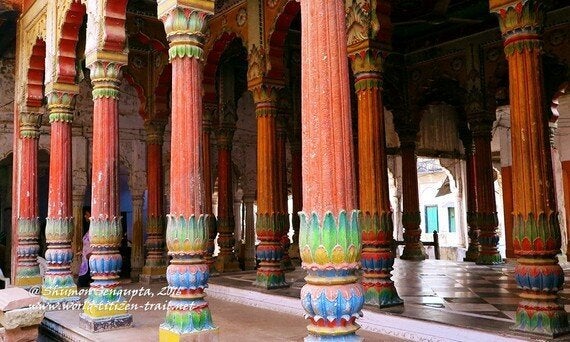
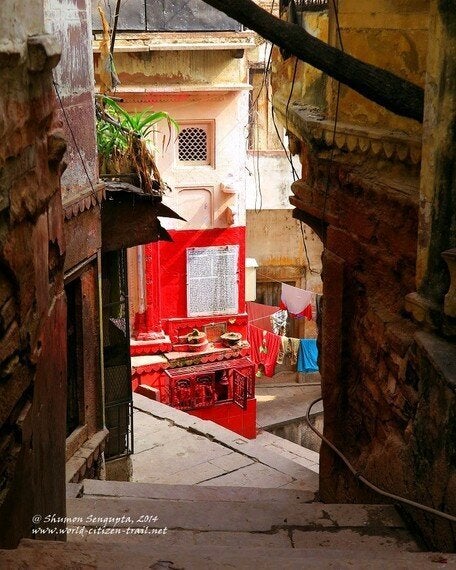

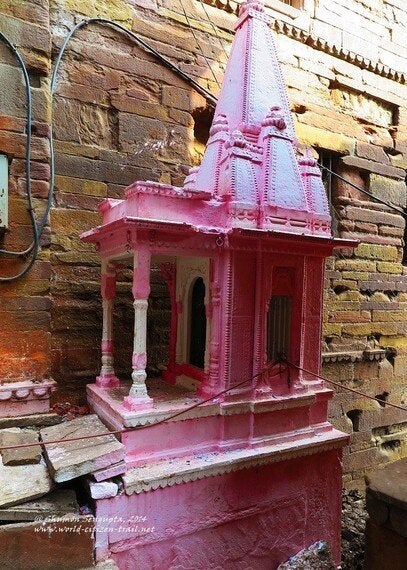
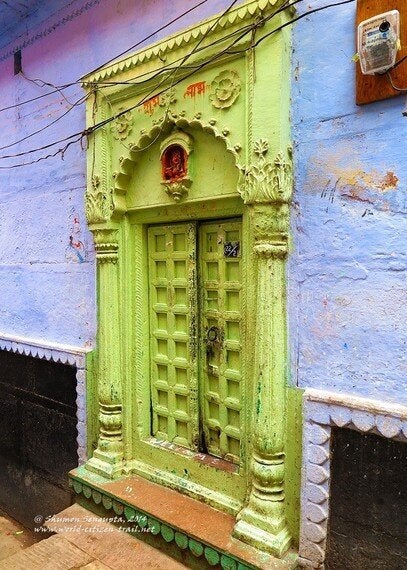
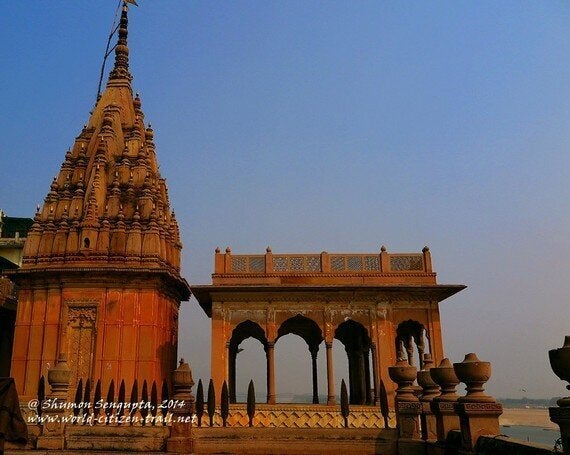
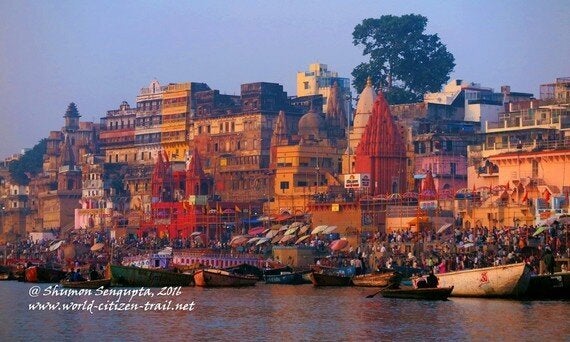
The area behind the riverfront is a historic built-up urban-scape consisting of a dense and chaotic maze of narrow streets and cobbled lanes and passages. The narrower thoroughfares - a result of the leftover space between the built up structures - are just wide enough to allow pedestrian passage. The medium size lanes allow the passage of two-wheelers and hand carts, and the wider lanes are barely wide enough for cycle-rickshaws and three-wheelers to pass through.
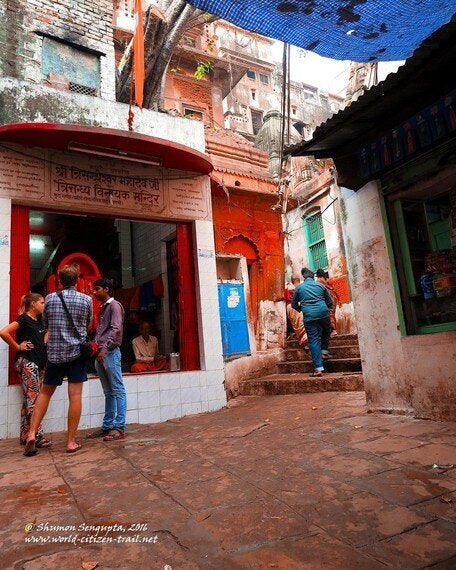
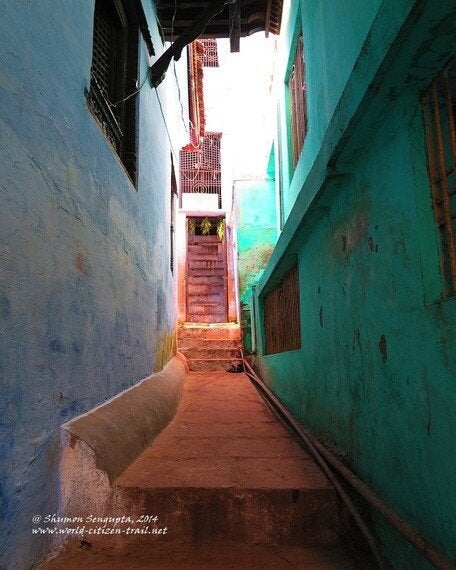
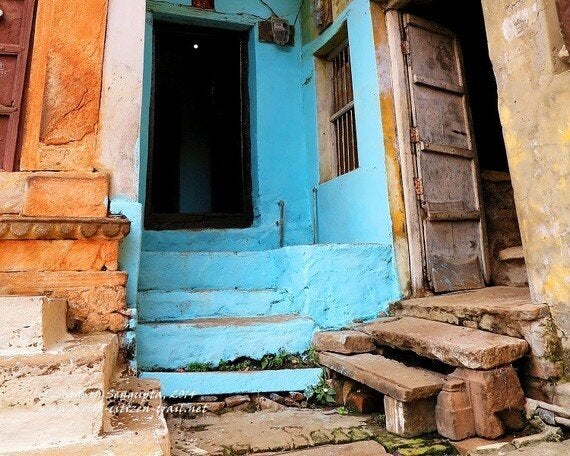

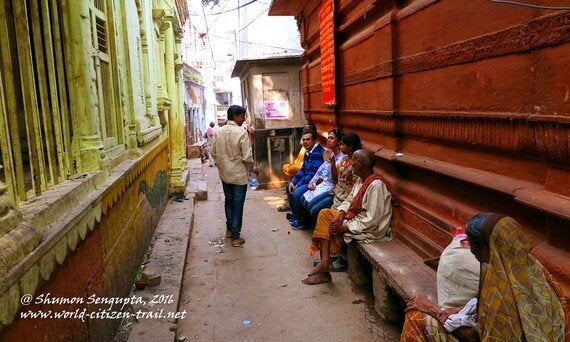
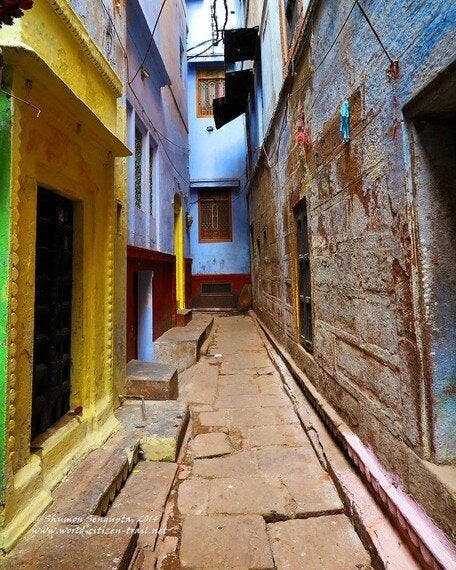
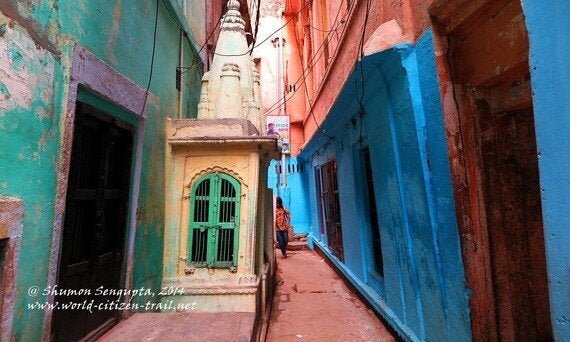
As you walk along these ancient, enclosed streets, lanes and passages, you will find yourself going past countless wayside shrines and temples, beautiful old houses and mansions with colonnaded verandahs, and beautifully decorated doorways.
Most houses and mansions are built on high masonry foundations, with streets laid out at a level considerably below the level of the ground floors. Many mansions and houses have hanging verandahs, balconies and galleries, often embellished in bas-relief, stucco and murals.
Everything seems to be ancient, grand and beautiful, albeit decayed and worn out with the passage of time, and intensely atmospheric.
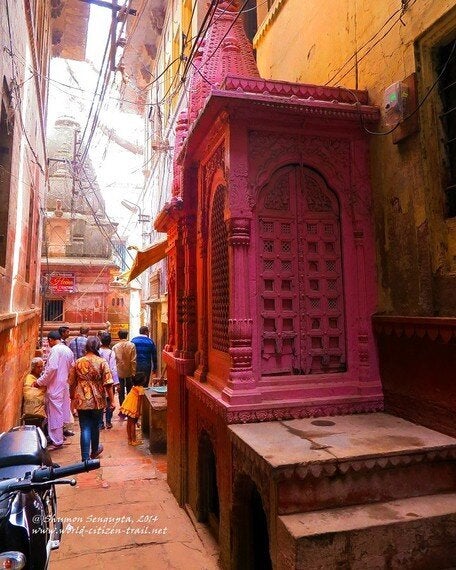
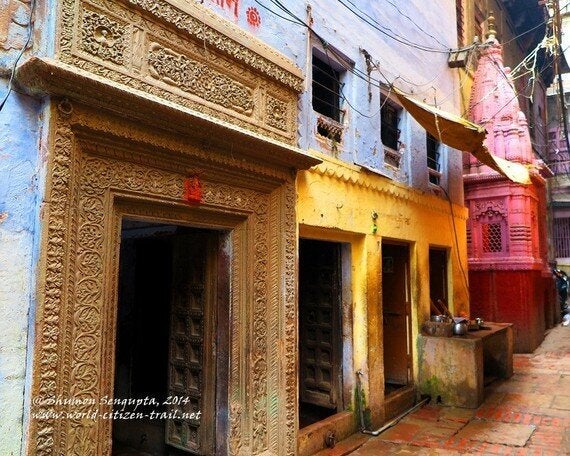
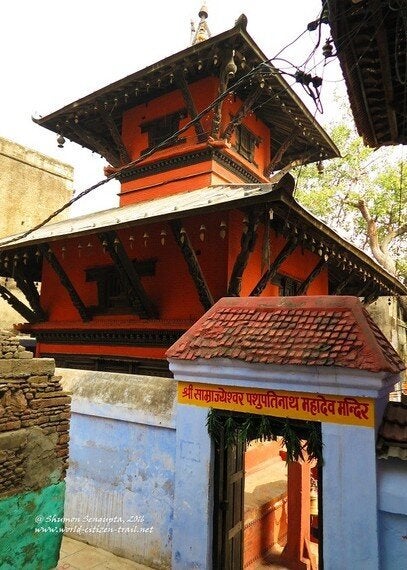
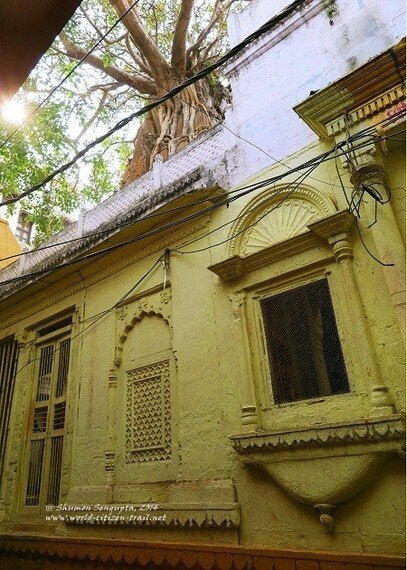

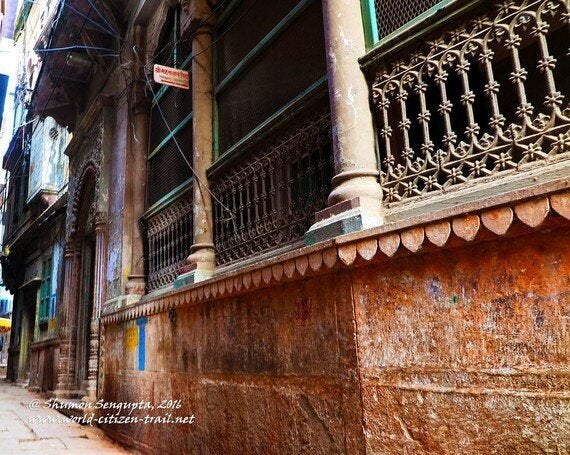
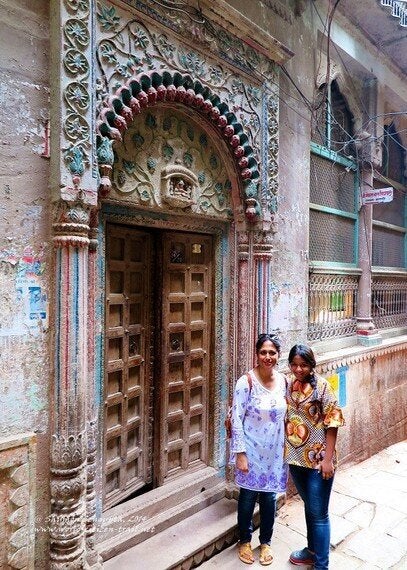

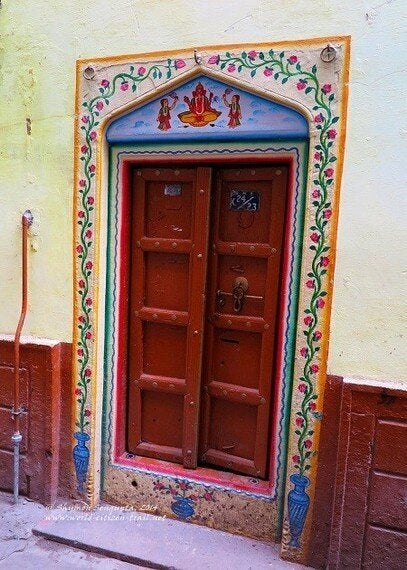
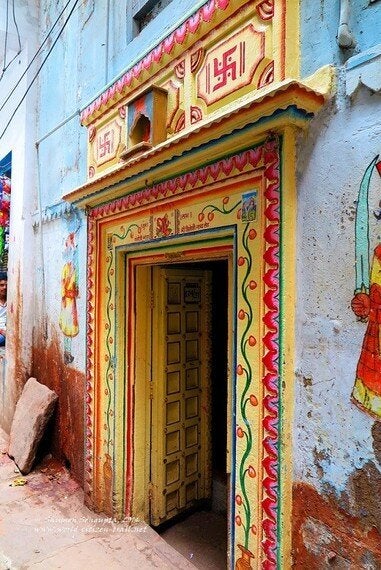
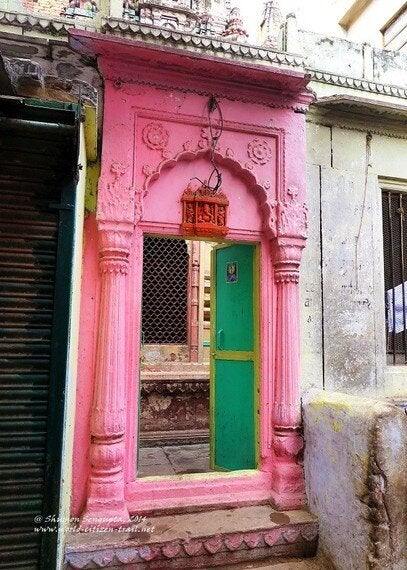
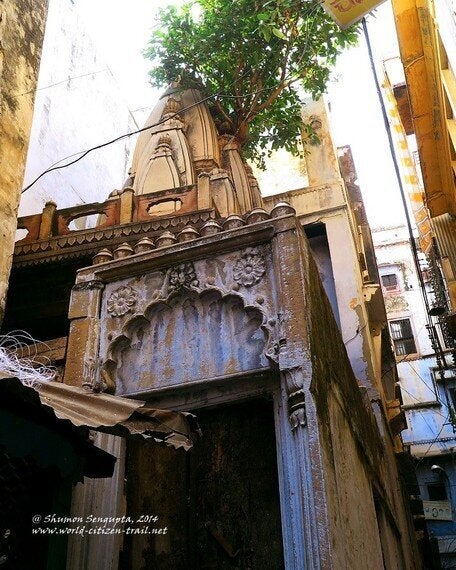


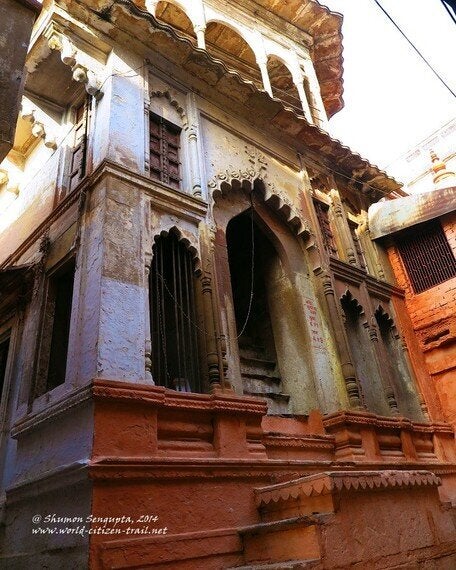
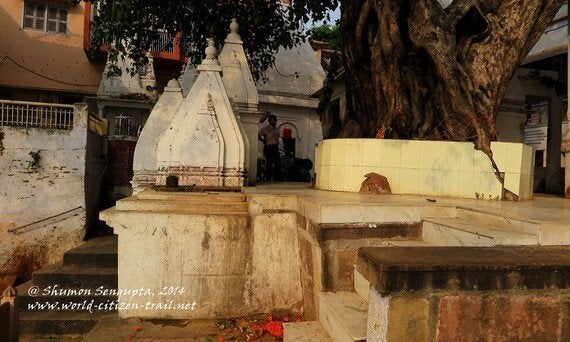
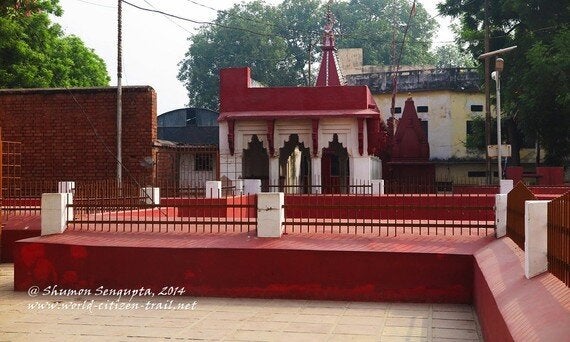
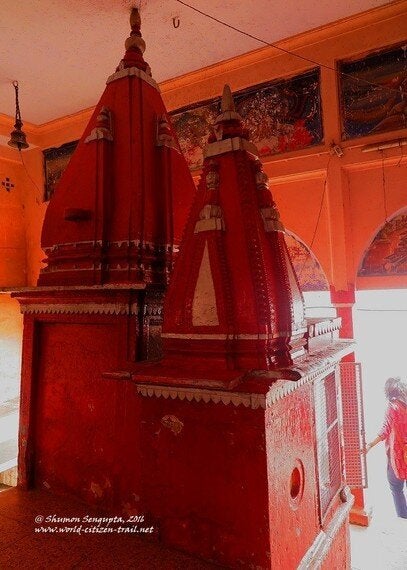
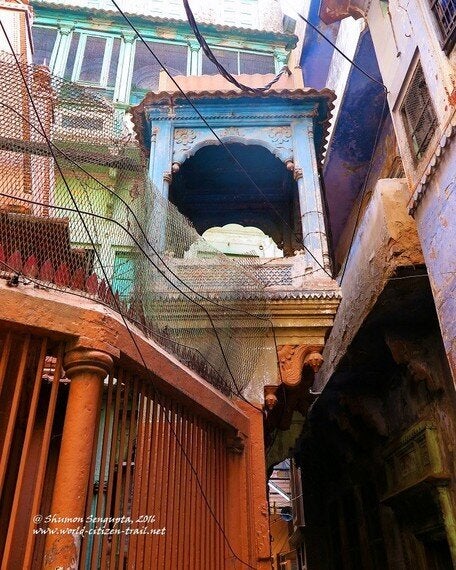
Walls and facades of many buildings in Varanasi are decorated with vibrant murals executed by local artists, in a folk painting style. On pavements, corners, niches and wayside shrines, you will find old, worn out, vaguely anthropomorphic stones and images of deities smeared with scarlet and orange vermilion paste, sprinkled with turmeric powder and strewn with flowers and other ritual offerings.
On the thresholds, over the doorways of temples and houses are images of the elephant headed Hindu god, Ganesha, the remover of obstacles, executed in bas-relief or as a mural painting. There is also a profusion of stone 'lingas' (phallic representation) of Lord Shiva, the presiding deity of Varanasi, in all possible niches and corners.
If you are not a Hindu, the prodigious display of a multitude of Hindu religious images and icons will most likely leave you astounded and confused - Hinduism will seem totally incomprehensible and impenetrable, at least to begin with.
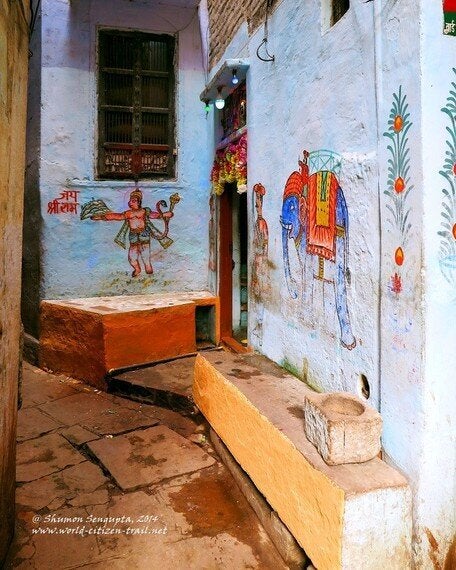
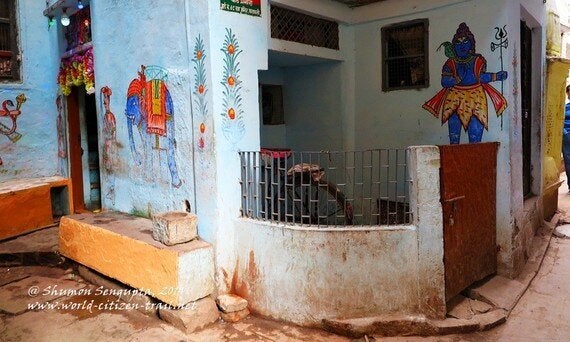
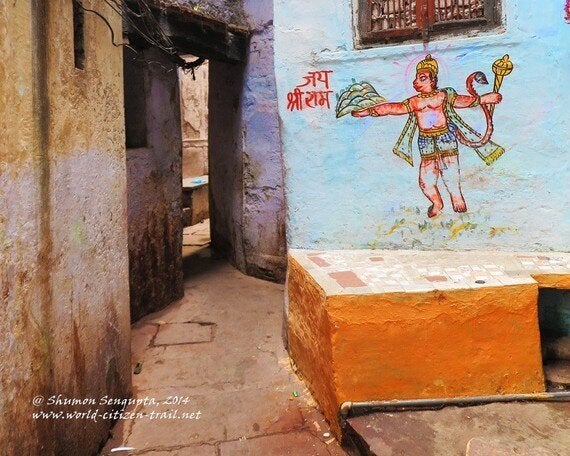

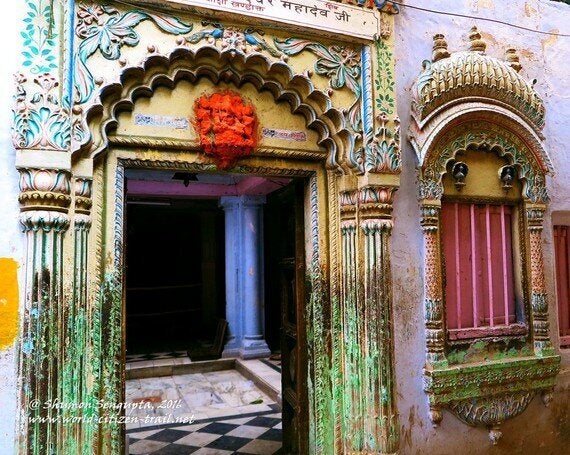
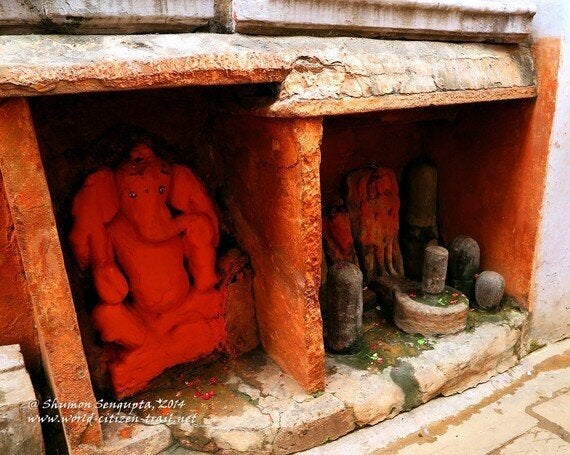
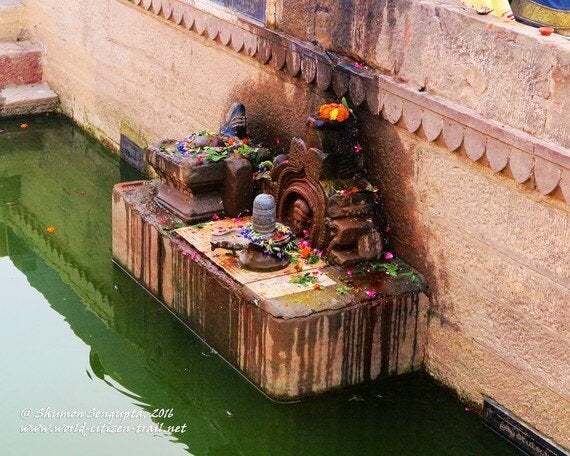
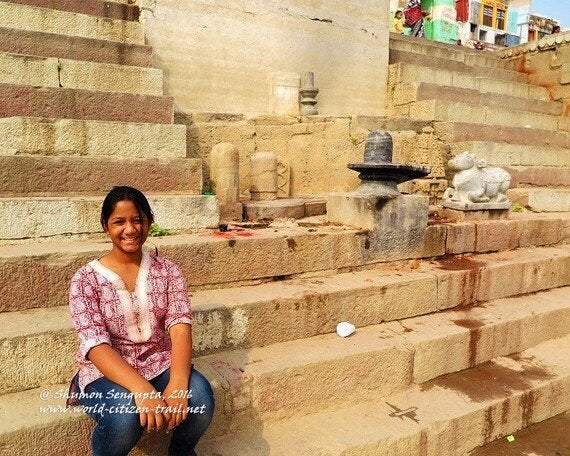
As you walk through the confusing maze, you will have to negotiate your way with stray cattle (particularly bulls - scary but pretty tame), pariah dogs, local residents, pilgrims and tourists, and where the passages are wide enough - with handcarts laden with goods, rickshaws and speeding two and three wheelers. You will find yourself gingerly skipping over garbage piles, cattle droppings and dog poop, left over food, and discarded ritual offerings from previous day's worship.
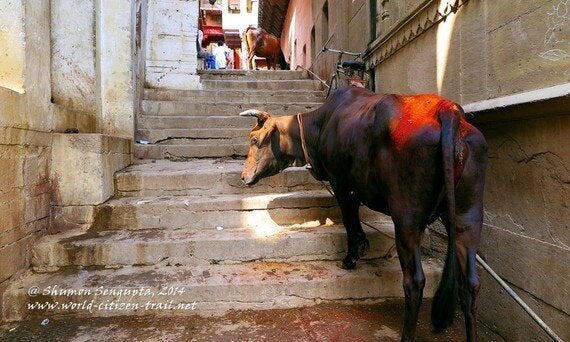
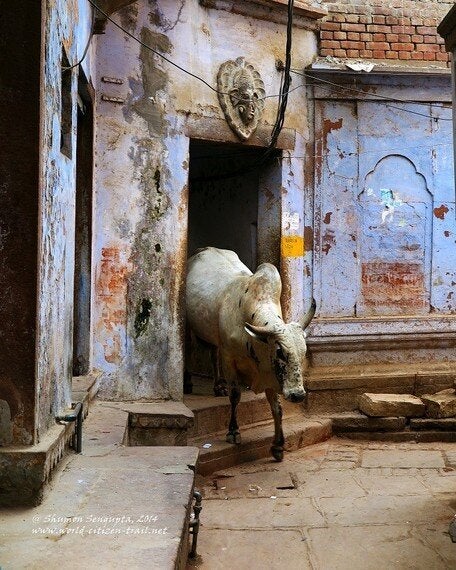
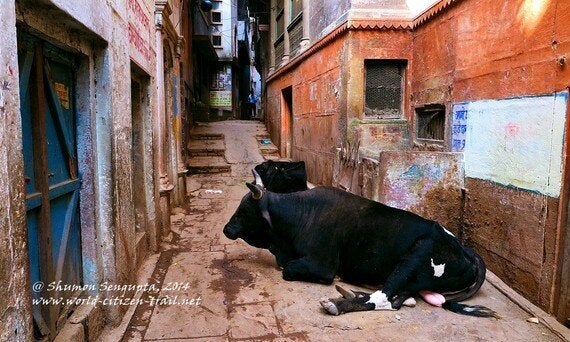
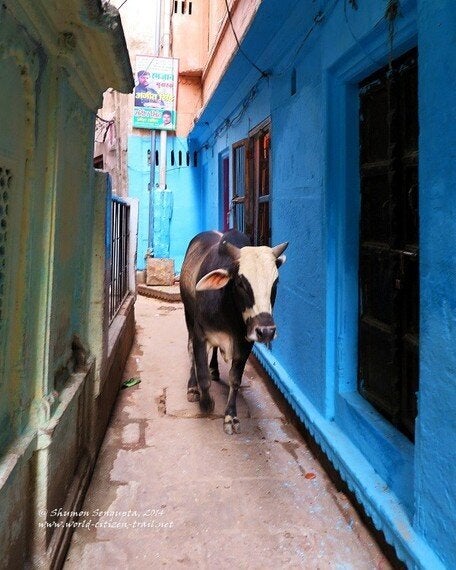
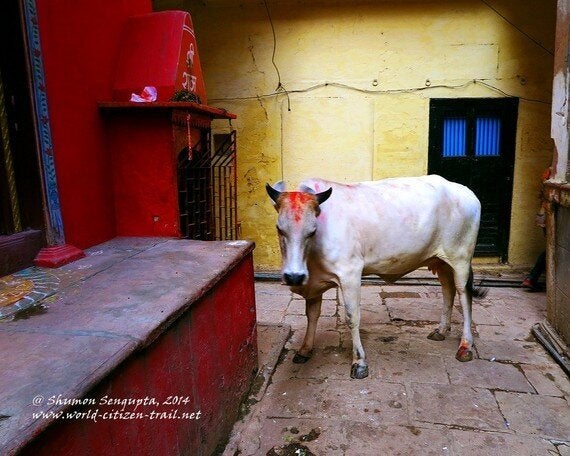
You will bump into sadhus and sanyasis who are stark-naked-ash-smeared, or brightly and generously robed or anything in between. And you will encounter 'pundits' (teachers), 'purohits' (priests), 'pandas' (temple touts), mendicants, widows (sadly abandoned by uncaring families), pilgrims, devotees and wealthy temple patrons. You will meet a snake charmer or two, with their half dazed, ill fed cobras, cajoled and terrified into making a show of their raised hoods.
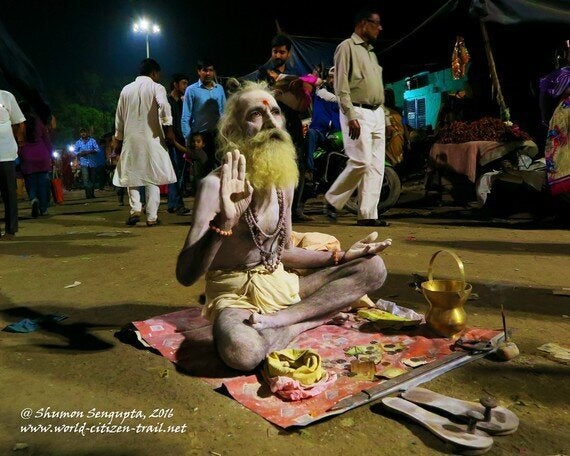
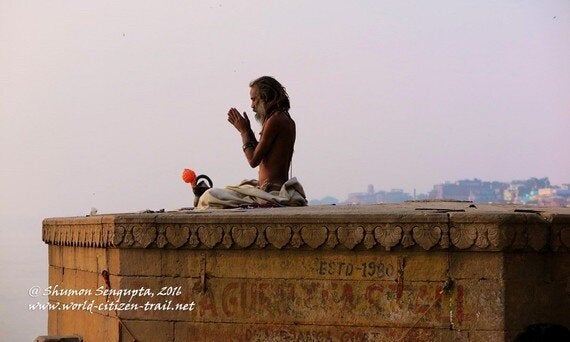
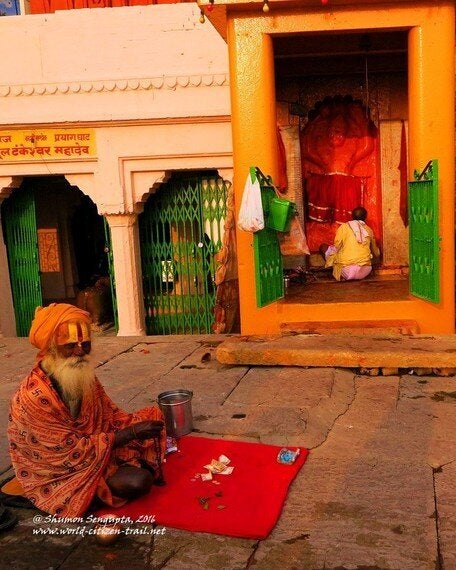
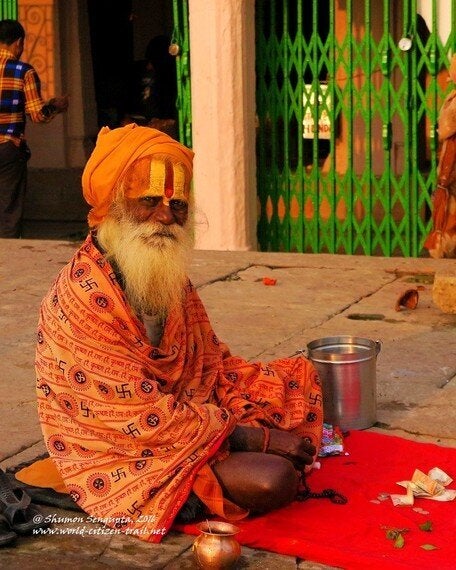
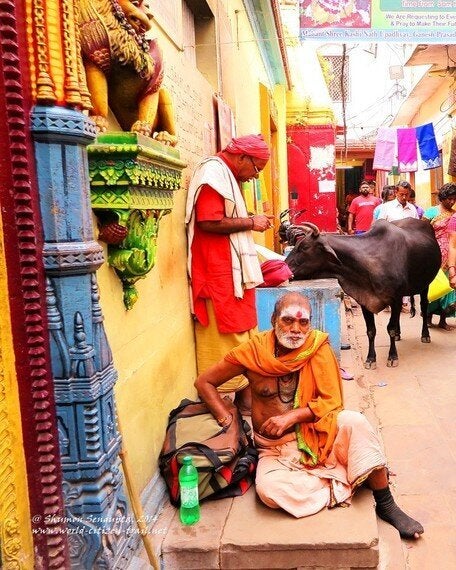
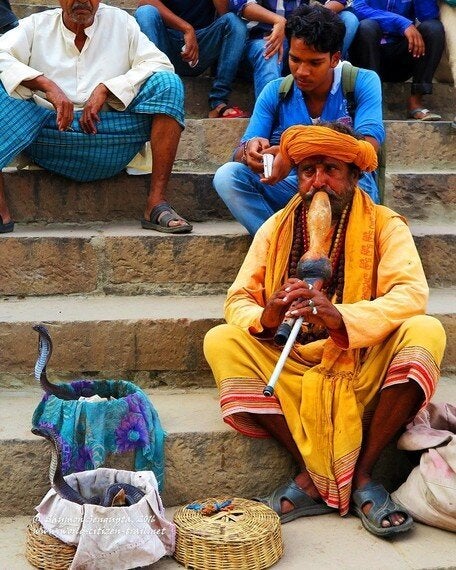
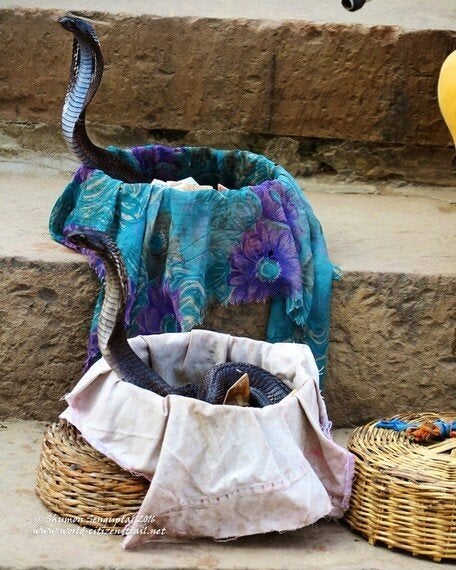
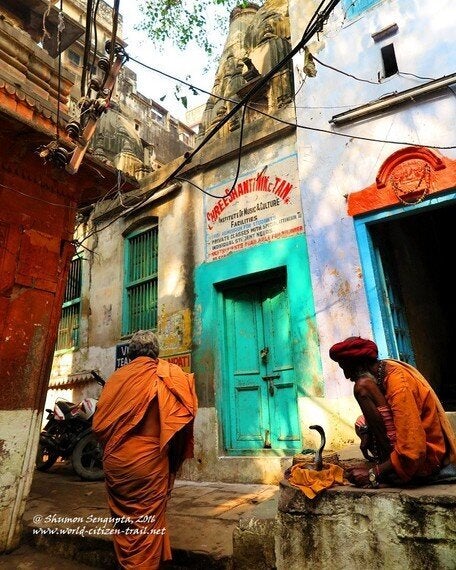

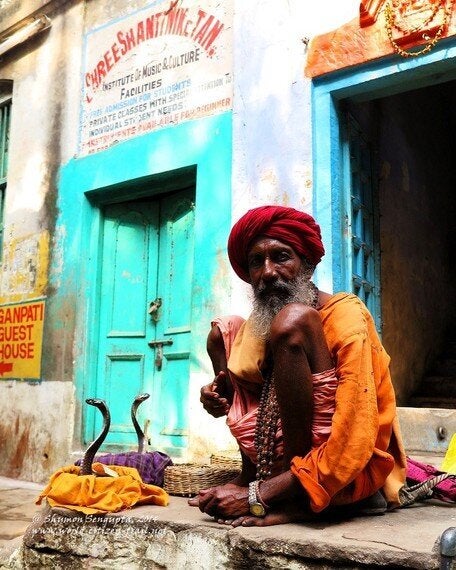
And if you are mindful, you will suddenly find a short flight of steps leading up or down into a spectacularly beautiful, old and crumbling temple. A peep through an ornamented or sometimes even a nondescript doorway will often reveal a magnificent courtyard of a traditional residential building, or a passage leading to beautiful temple or shrine, or a school for religious studies. You will also find sacred water tanks ('kunds") and wells, often attached to a temple.
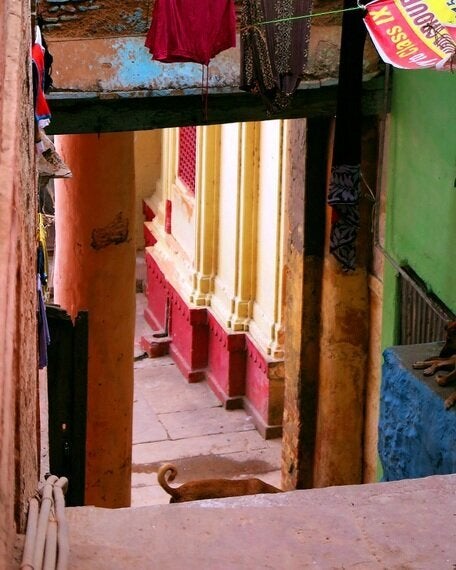
And if you are curious and serendipitous enough, you will also discover enclosed wrestling arenas with traditional Indian wrestlers, roughing it out on mud pits.
You will lose your way and then find your way, only to lose it again.
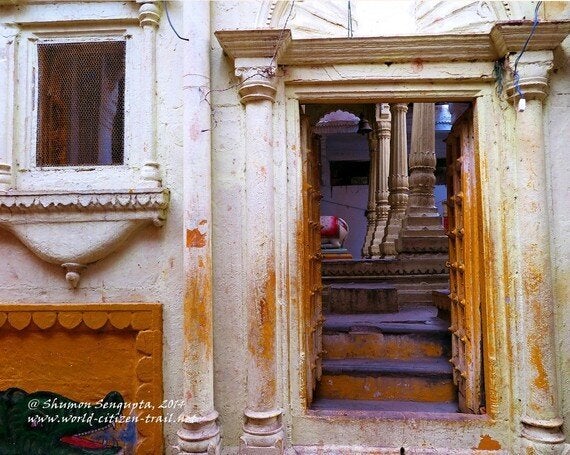
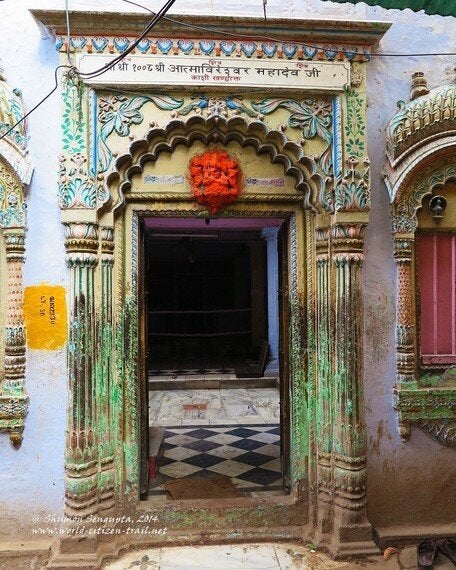

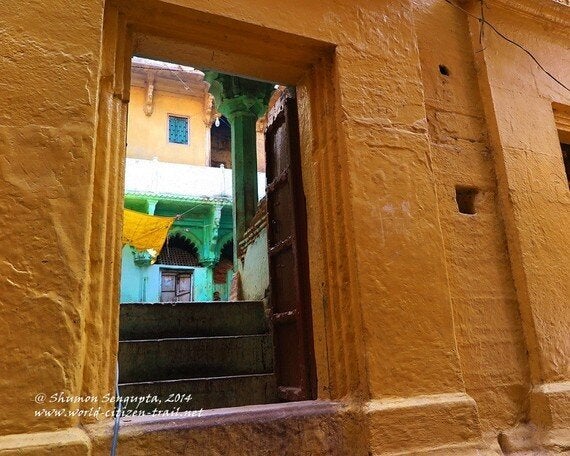
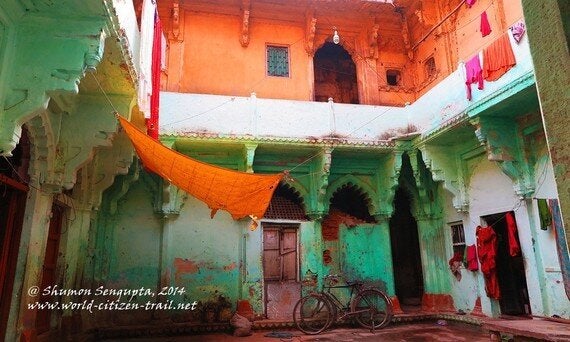
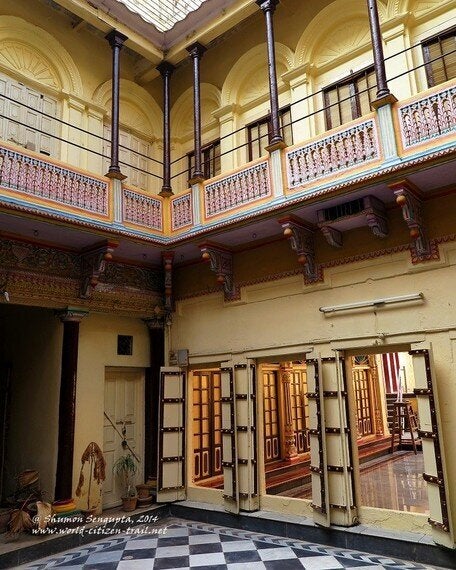

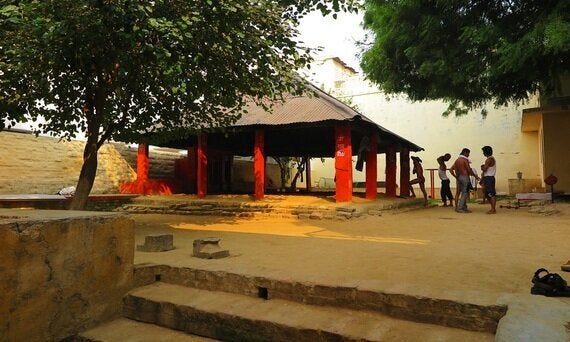
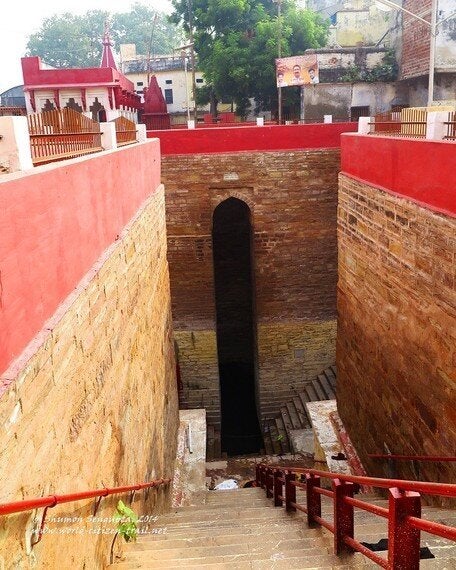
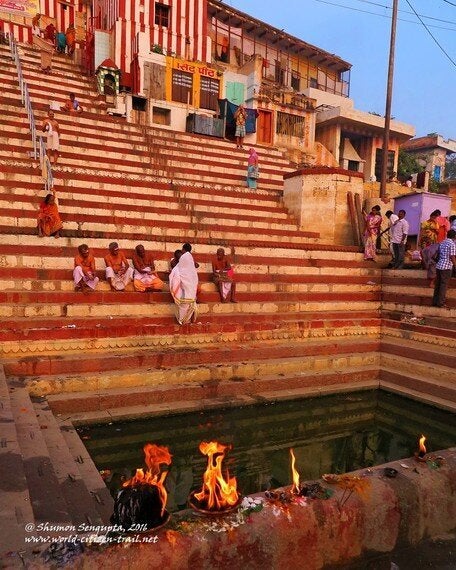
Apart from its fabled bazaars, Varanasi is also famous for its legendary cuisine, particularly its unique roadside food stalls selling a wide range of vegetarian snacks, including the famous yogurt drink called lassi.
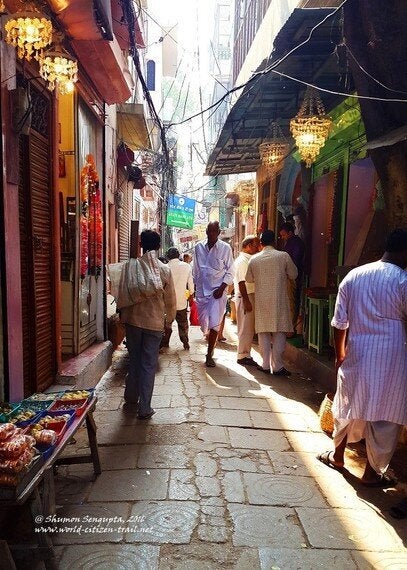
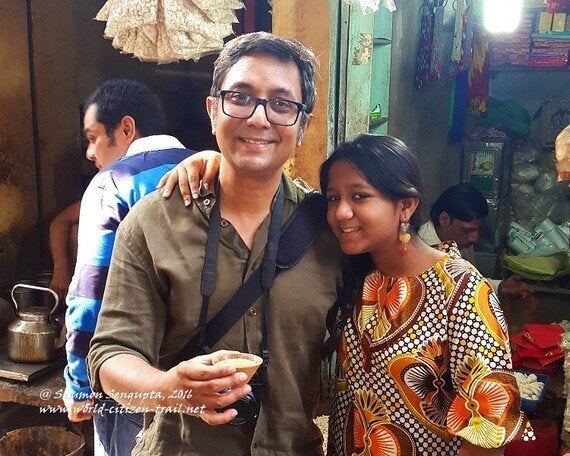
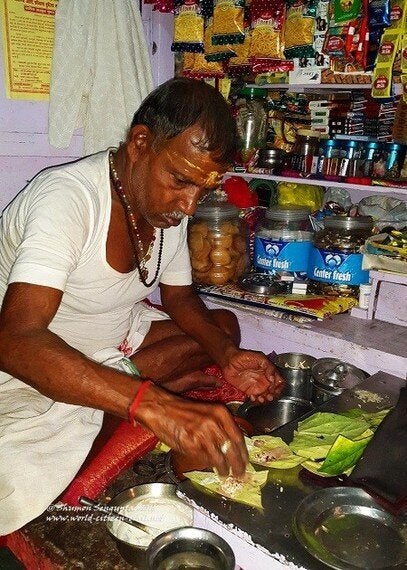
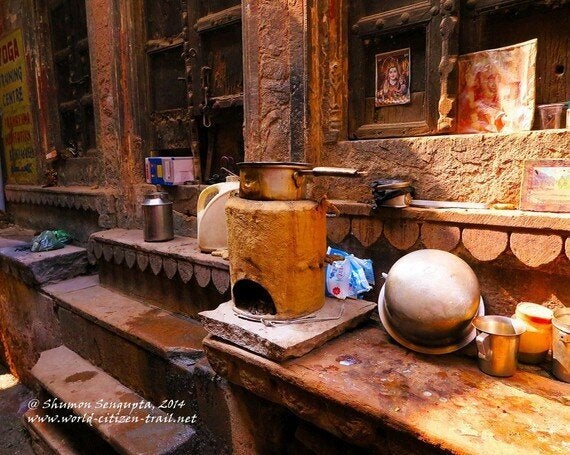
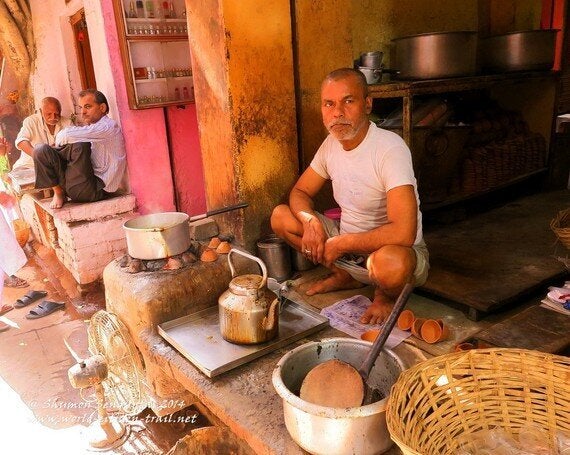
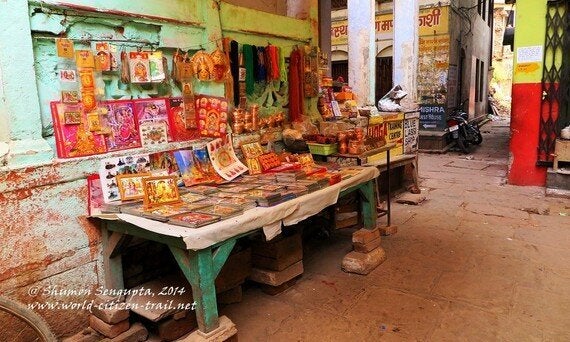
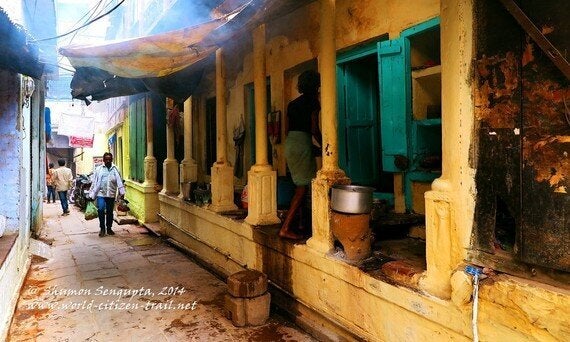

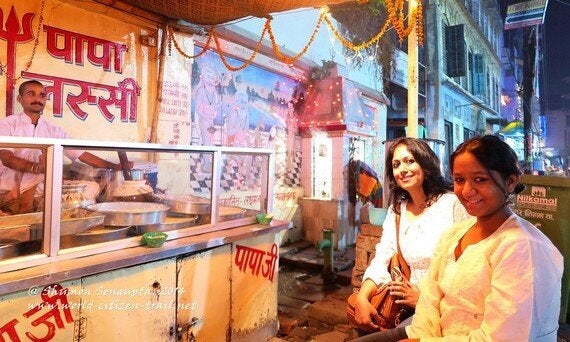
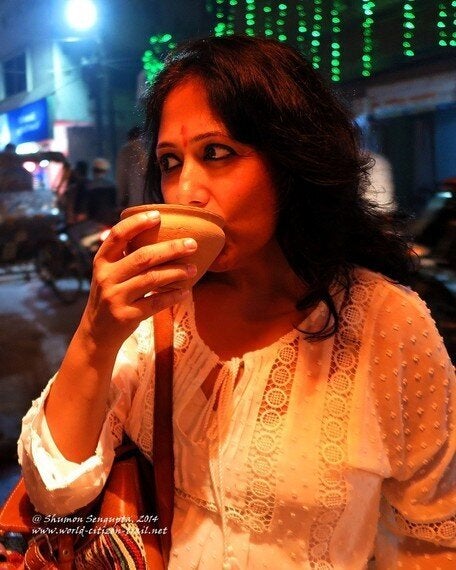

The busy, crowded and chaotic flower market, not far from the Kashi Vishwanath temple and the Razia Sultana Mosque, is a riot of colors and worth a visit, if you can put up with the jostling crowd of sellers and buyers.
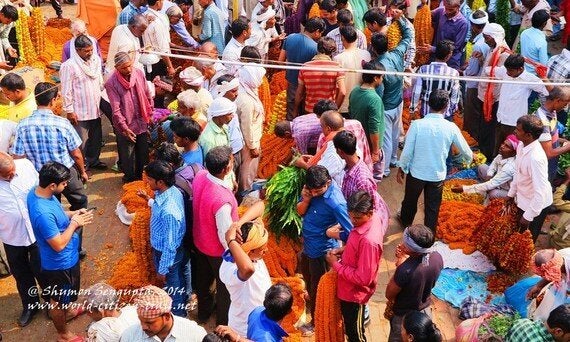
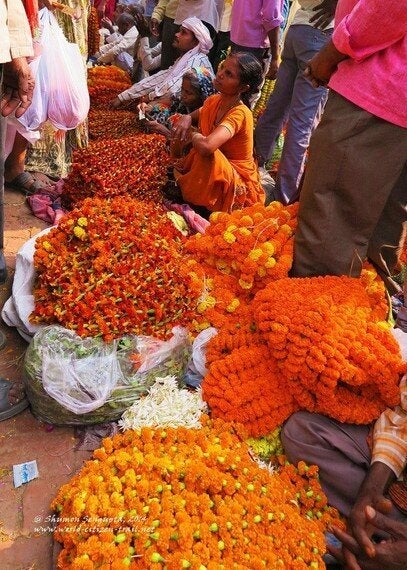
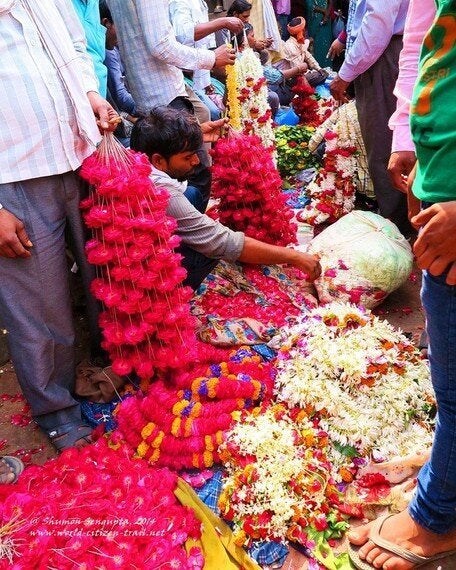
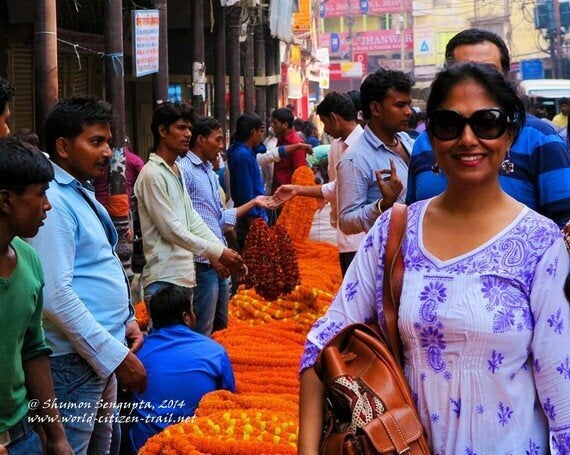
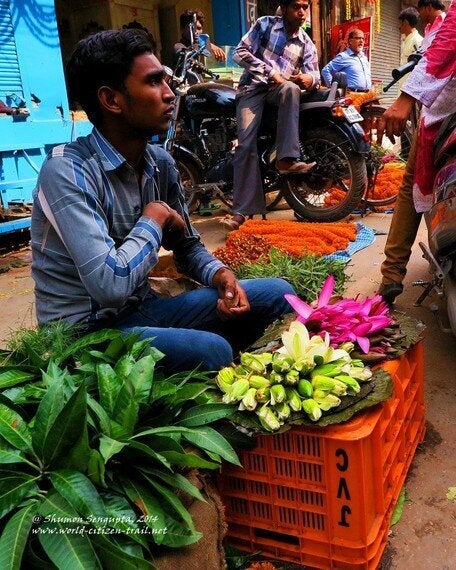
The serene and atmospheric Razia Sultana mosque, built sometime between 1236-1240, is situated on a high terrace, across the street from the Kashi Vishwanath temple. The entrance is through a narrow door, through a steep flight of stairs and as you enter the mosque, you will notice that is it almost exclusively built out of carved pillars from a demolished Hindu temple.
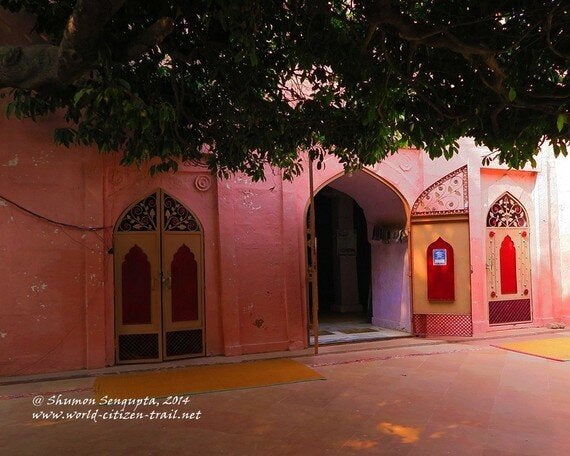
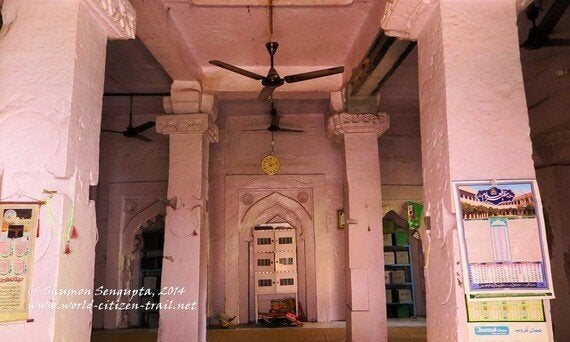
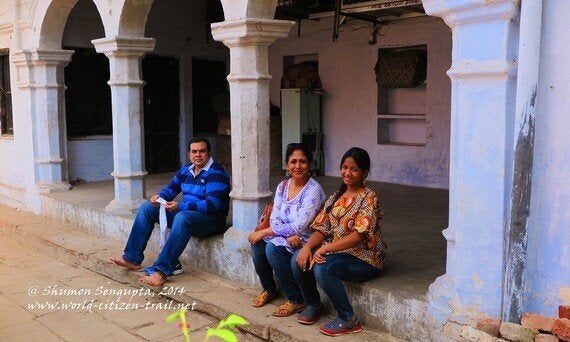
All along the labyrinth of narrow lanes, at places, there are flights of steep steps descending towards the riverfront and ending in the river. As you take one of these flights and descend towards the river, you will find yourself transitioning from a dark, enclosed and meandering maze into the iconic ghats (masonry, stepped embankments) of Varanasi - a dramatically contrasting expanse of space, light, air and water.
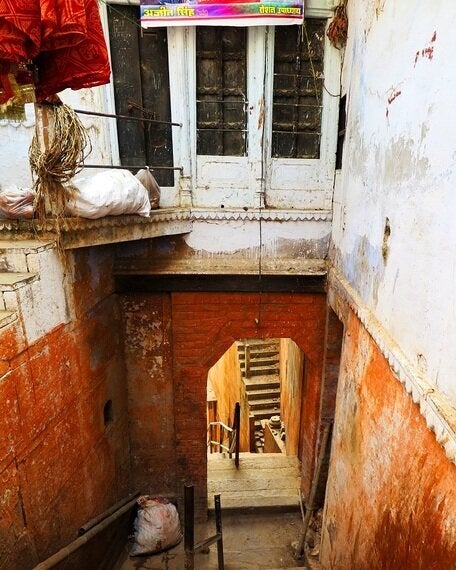
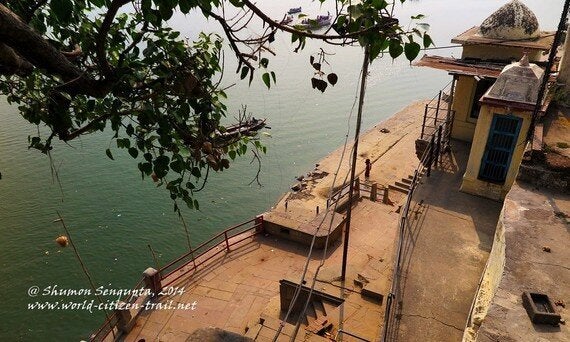
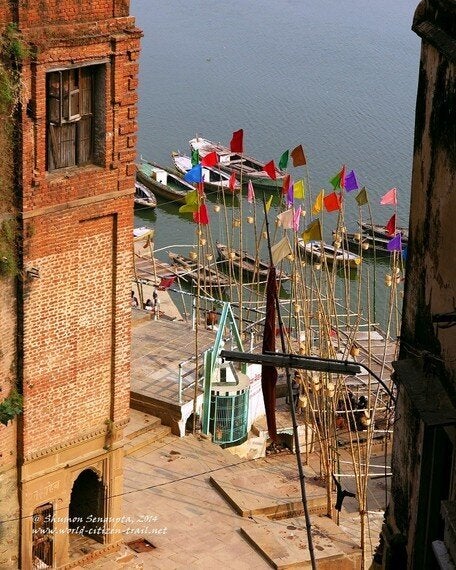

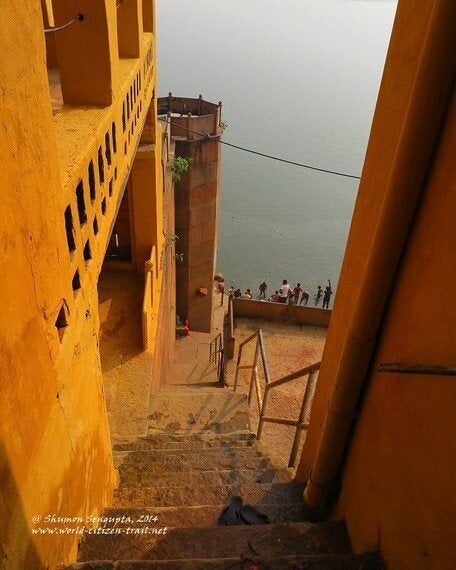

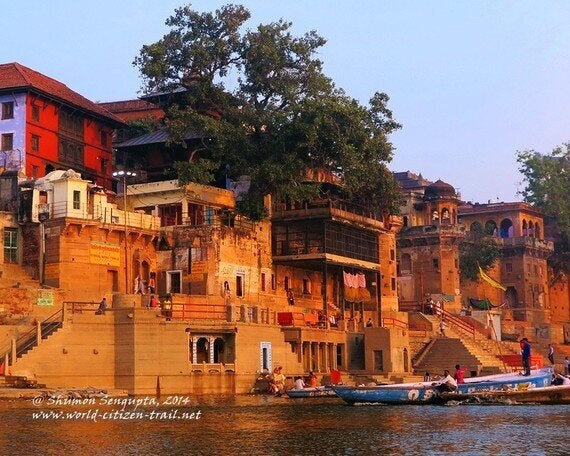
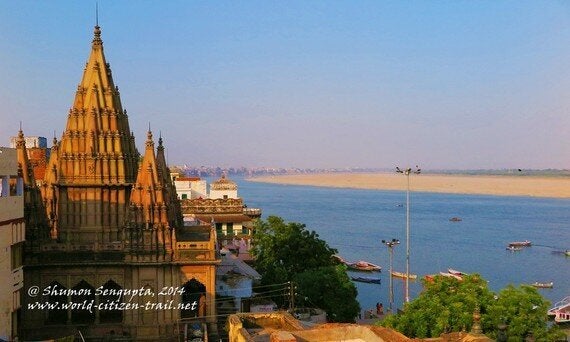
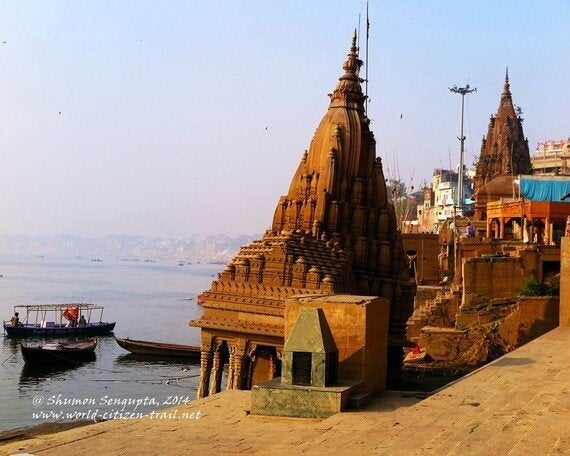
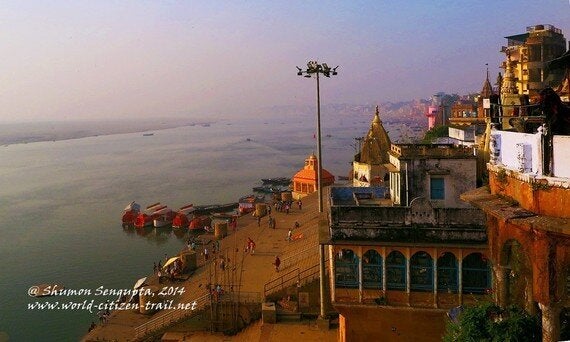
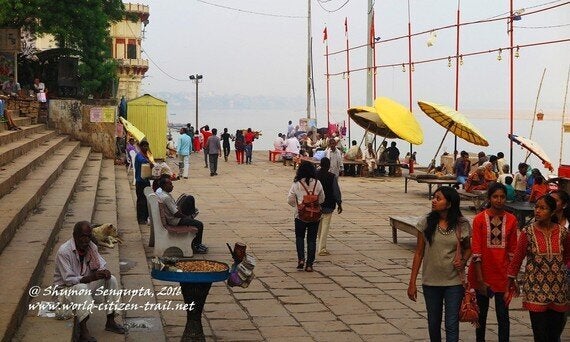
The riverfront serves as a grand proscenium for the enactment of ancient traditions, rituals, beliefs, values and collective cultural memories intimately linked to the cycle of seasons and to human life and death. And everything is closely tied to a deep reverence for nature and for the river Ganges, the latter considered to be of divine origin by Hindus.
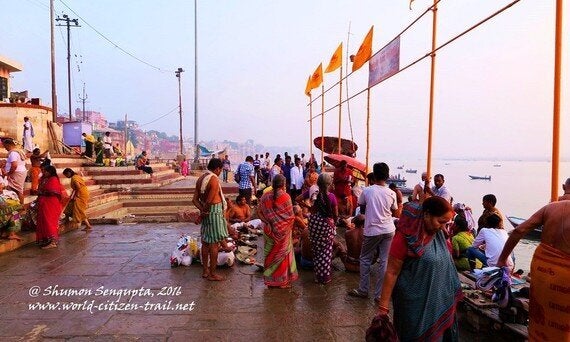
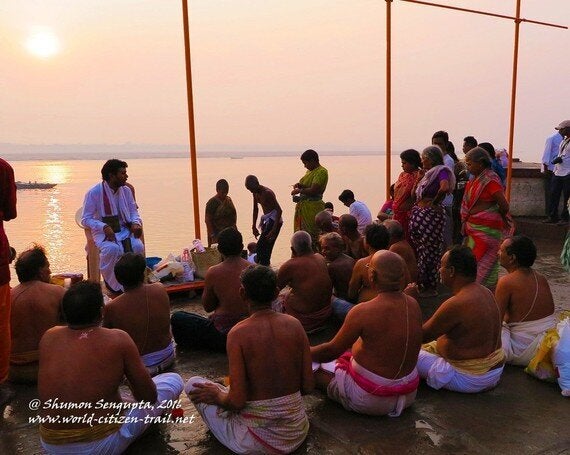
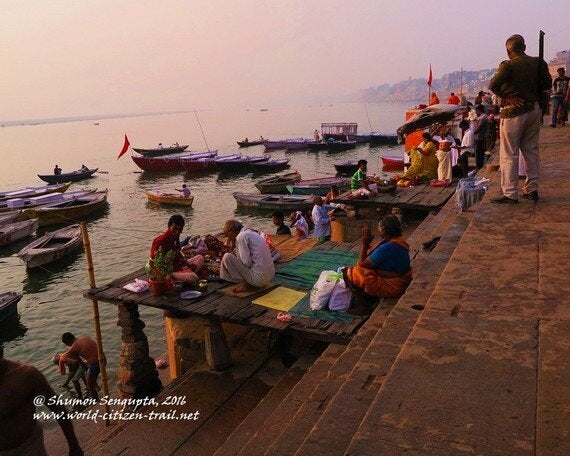
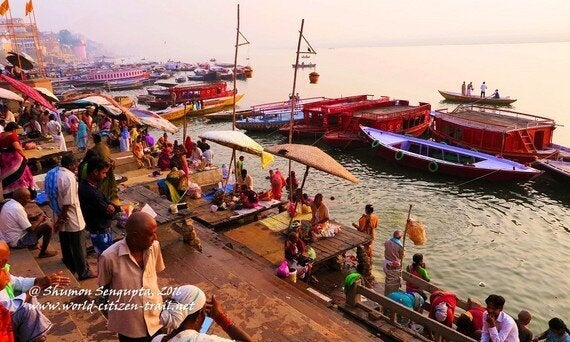
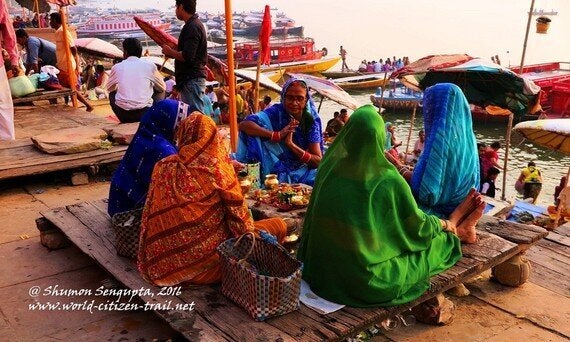
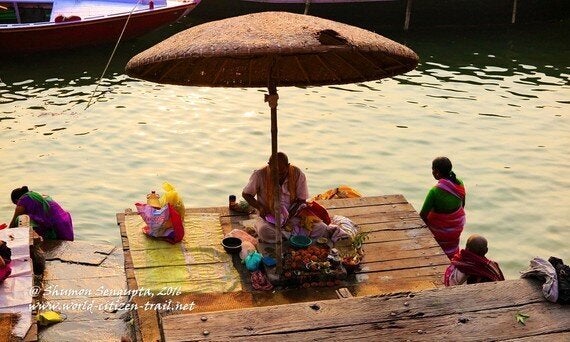
On these ghats local residents and pilgrims bathe, worship, meditate, exercise, practice yoga, and give offerings and pray in the numerous temples. As public spaces, these ghats have organically evolved over ages into a spiritual and cultural center for Hinduism. Here you will find the magnificent and splendid spectacle of Hindu ritual worship (the Ganga 'Aarati' in particular) on one hand, and on the other hand, on two cremation 'ghats' - named Harishchandra and Manikarnika - the macabre and sordid spectacle of the Hindu cremation of the dead.
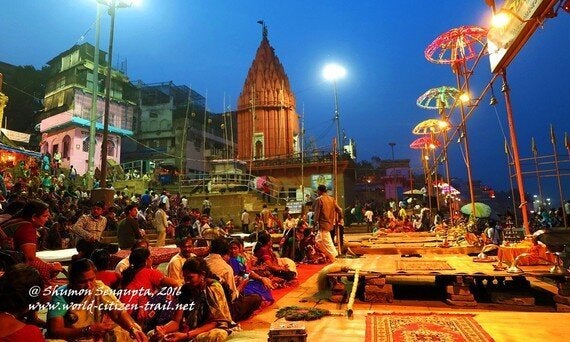
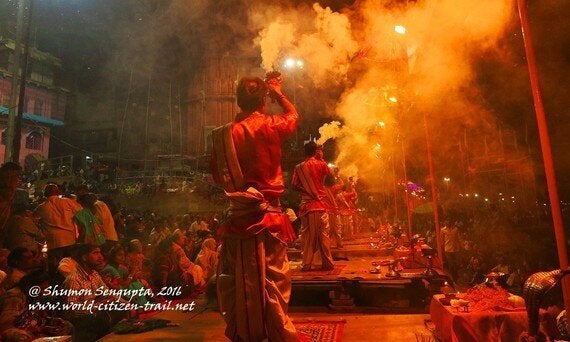


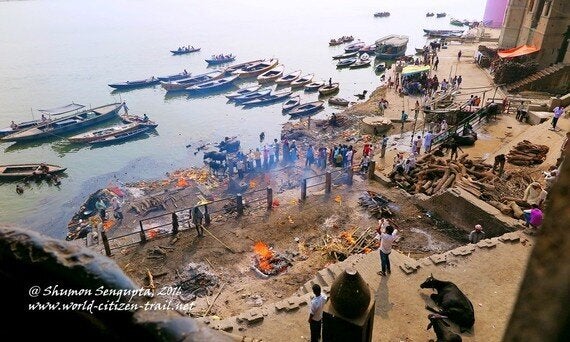
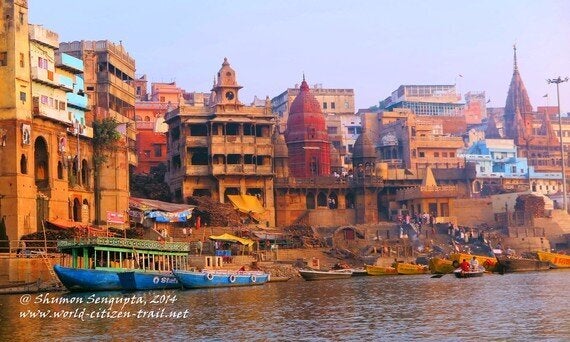
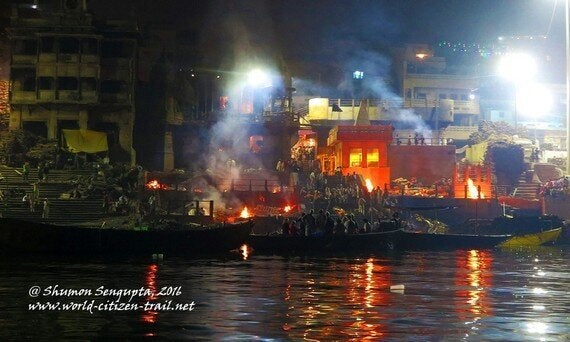
To wander about in Varanasi is to stray back in time, into an undated era - an era that is at once ancient and on the move, where things feel eternal, yet evolving, where change is underpinned and colored by a sense of continuity.
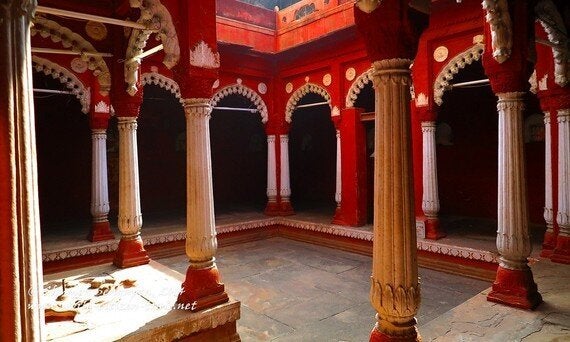
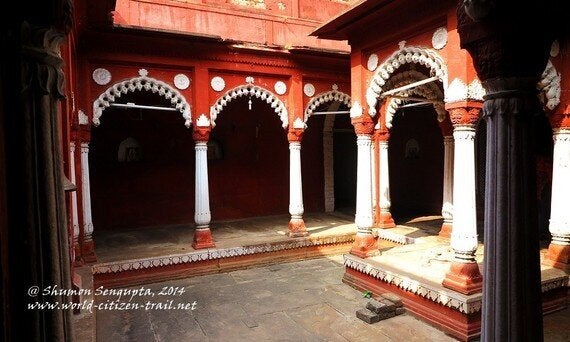
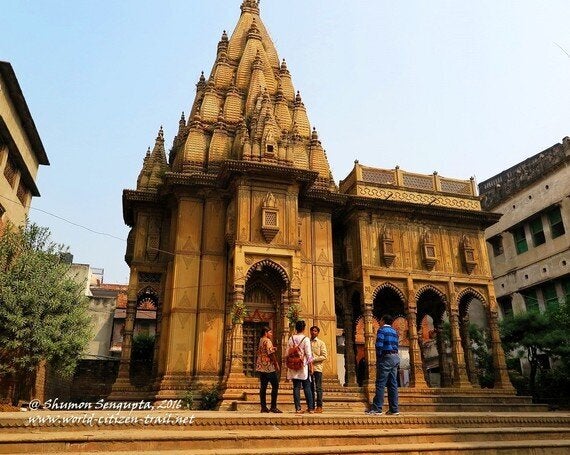

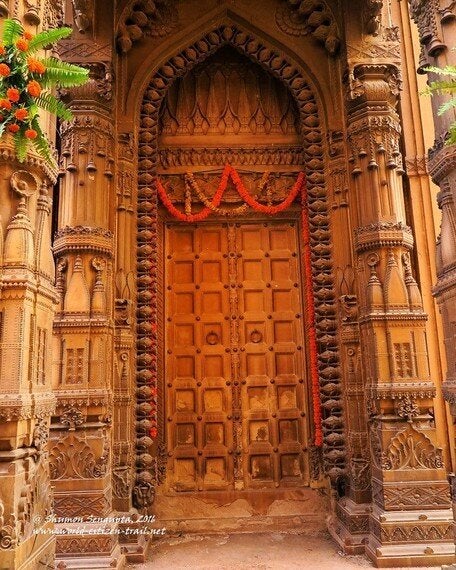
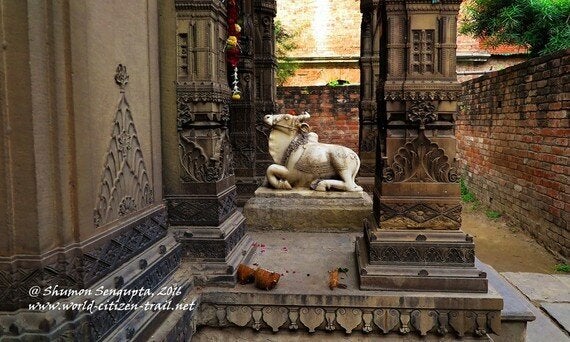
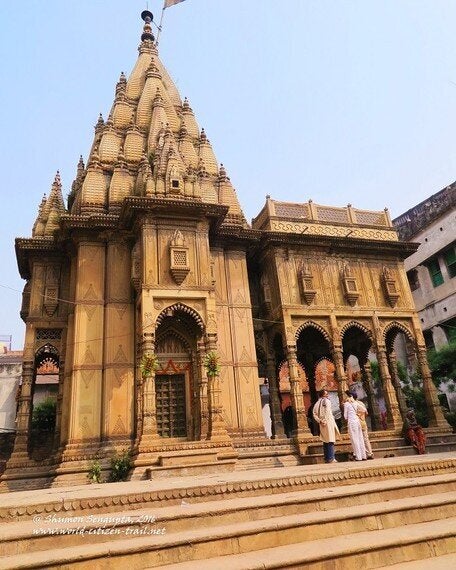
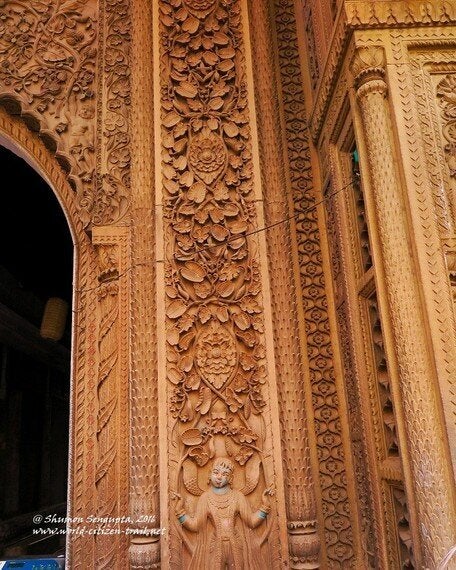
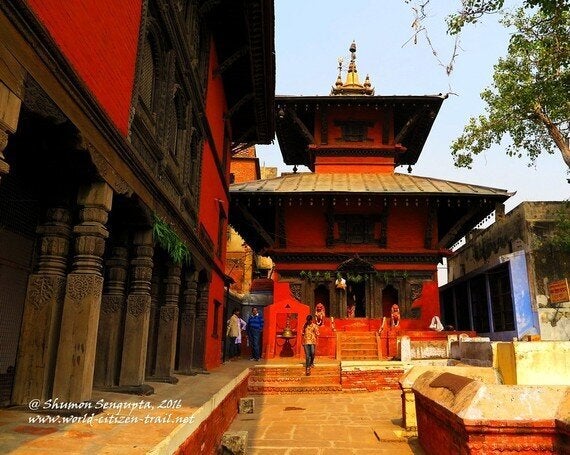
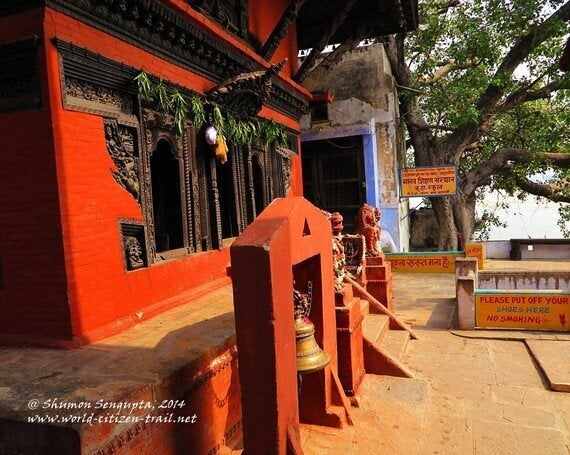
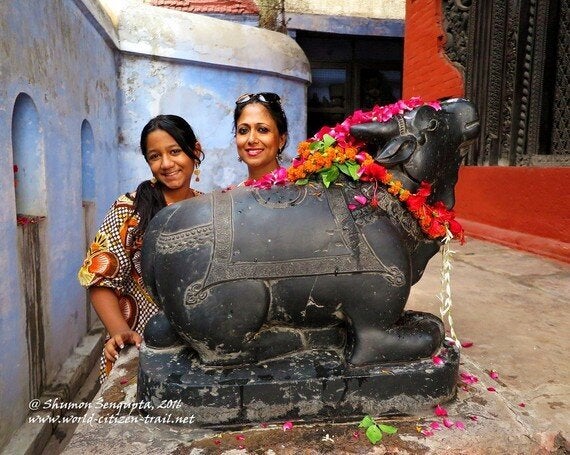
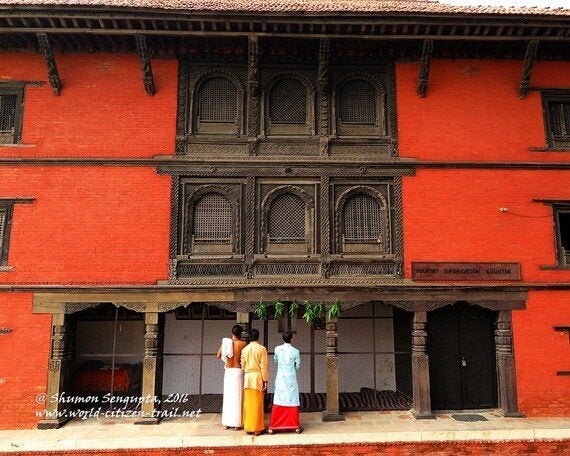

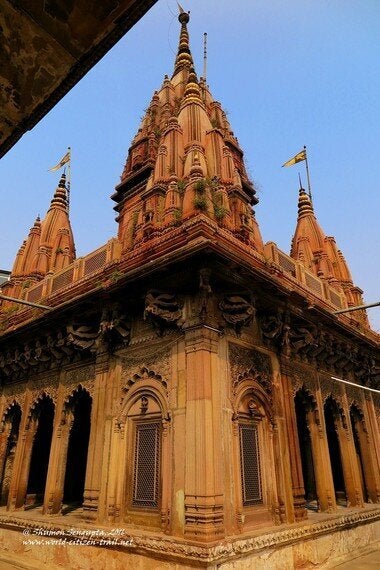
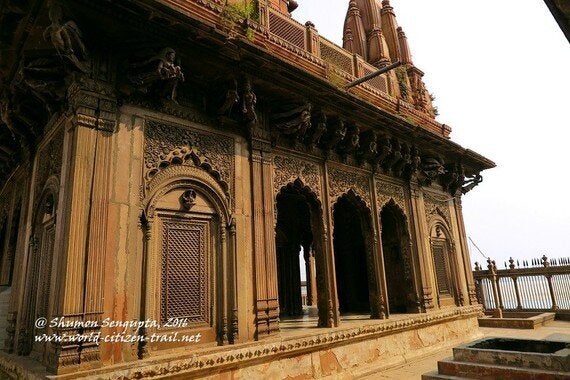

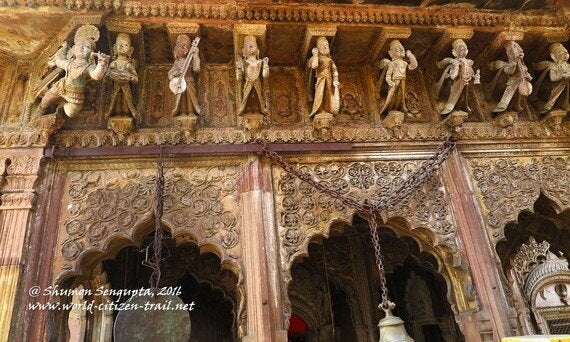
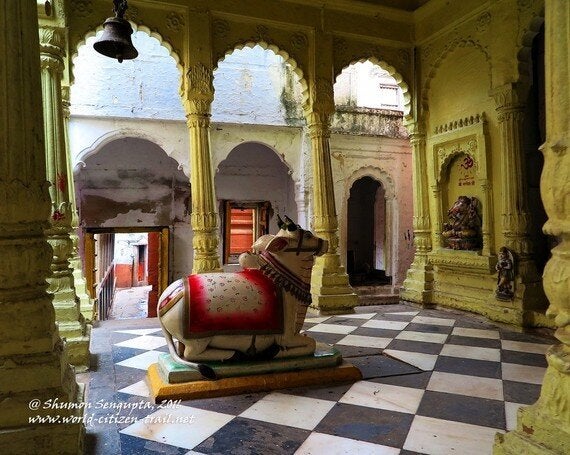
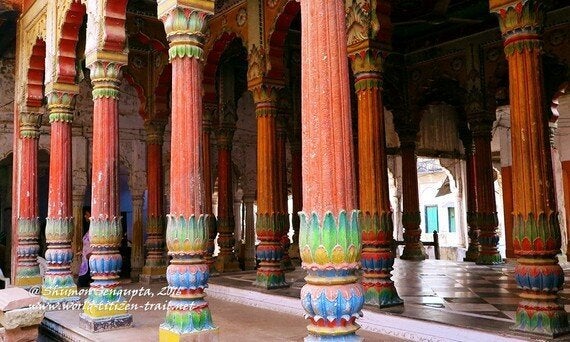
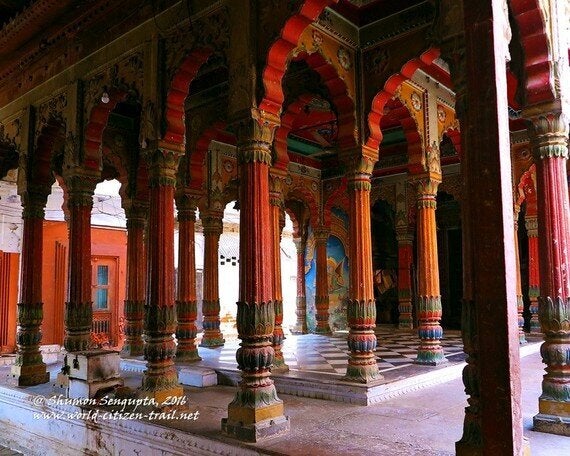
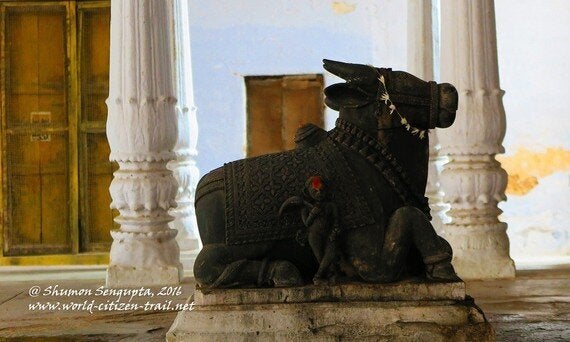
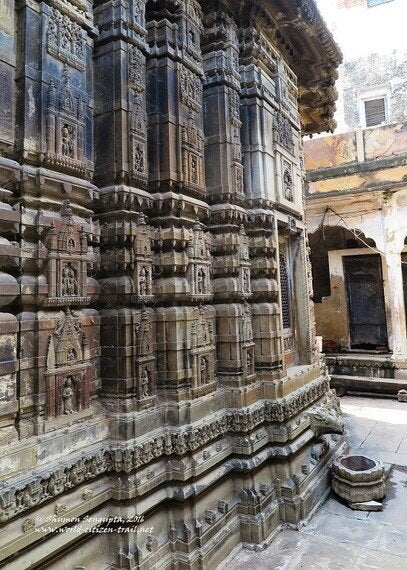
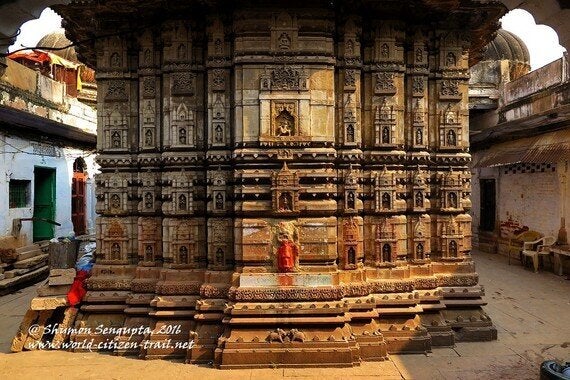
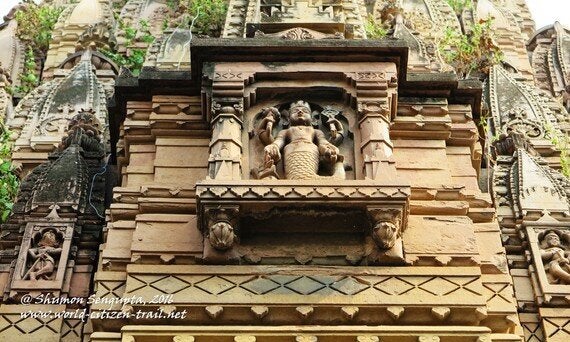
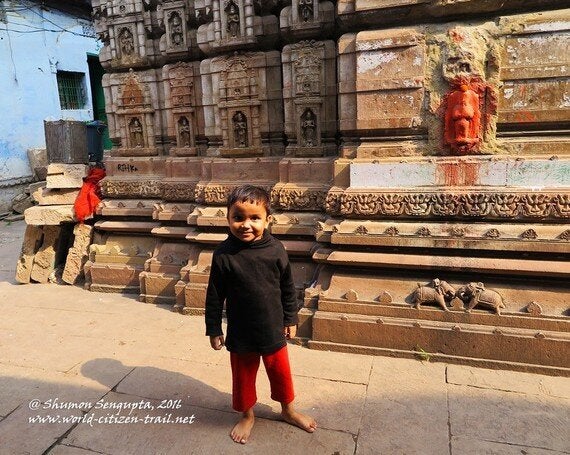
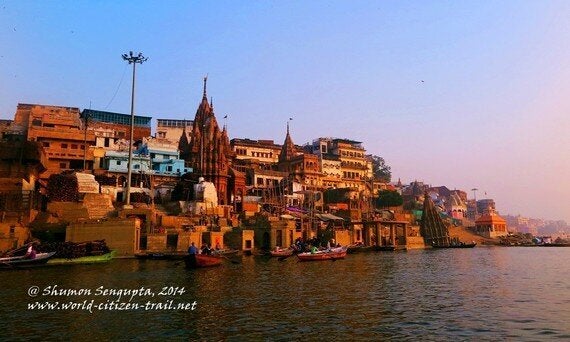

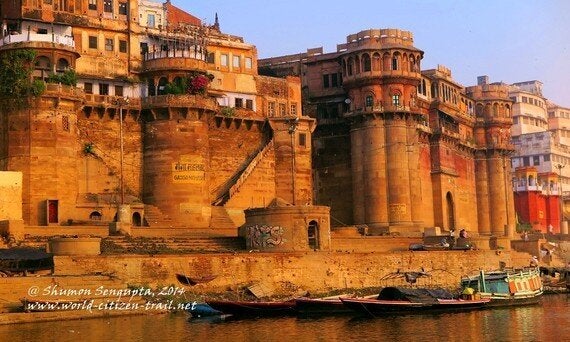
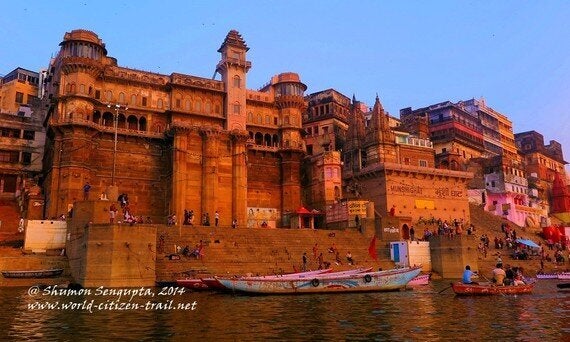
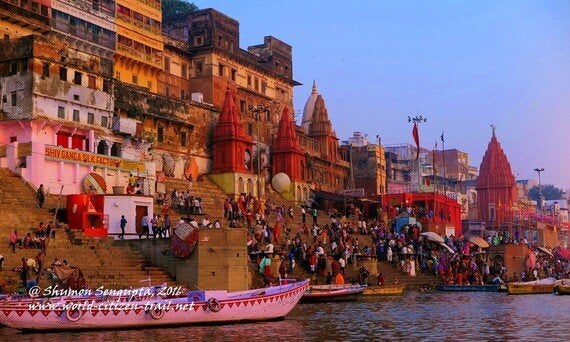
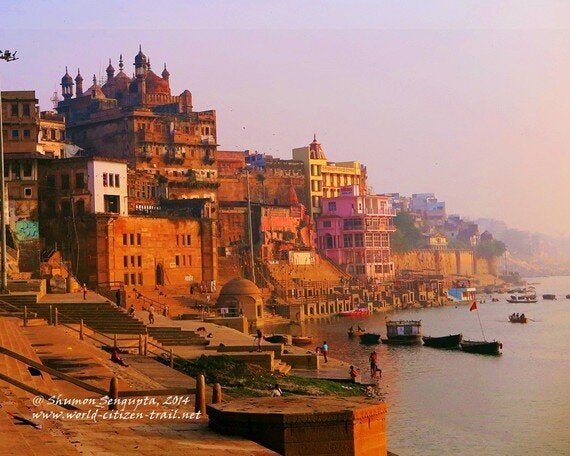
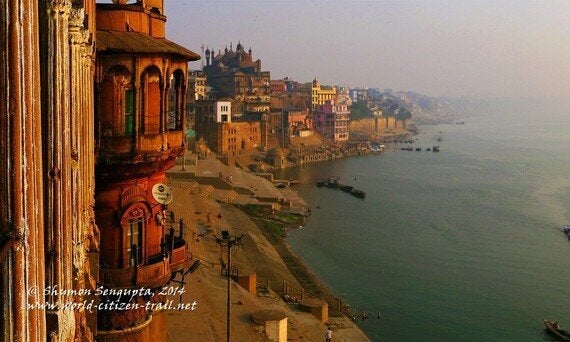
(You will find a longer article on Varanasi, giving some very interesting facts on the historical and cultural evolution of this ancient city in 'Eternal Varanasi: The Grand Theatre of Continuity in Change'. And to follow the author in his other journeys across the world, you might want to check his personal blog: 'Tales From the Tales of a World Citizen')